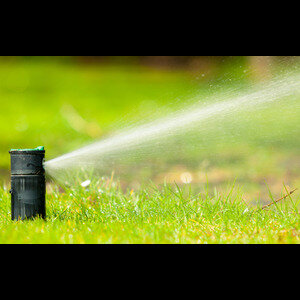
Introduction: The Importance of Irrigation Repair
Irrigation systems are the backbone of a healthy landscape, ensuring that your garden, lawn, and plants receive the right amount of water to thrive. However, even the most well-designed systems can encounter issues over time. Understanding how to perform irrigation repair and when to seek professional help can save you from costly water bills, prevent wastage, and keep your outdoor spaces vibrant and green.
This article explores the ins and outs of irrigation repair, from identifying common problems and their solutions to maintaining your system for optimal performance.
Common Irrigation System Problems
Irrigation systems can experience various issues due to age, weather conditions, or incorrect installation. Here are some of the most frequently encountered problems that may require irrigation repair:
- Leaky or Broken Sprinkler Heads
- Sprinkler heads can break or leak due to impact from lawn equipment, foot traffic, or natural wear and tear.
- Damaged heads can lead to uneven watering and significant water loss.
- Clogged Nozzles
- Dirt, sand, and debris can build up in the nozzles, blocking the water flow.
- Regular cleaning of nozzles is necessary to ensure proper water distribution.
- Valve Malfunctions
- Valves regulate the flow of water to different zones of the irrigation system.
- A malfunctioning valve can cause water to flow inconsistently or not at all, affecting the coverage area.
- Water Pressure Issues
- High or low water pressure can significantly impact the efficiency of your irrigation system.
- It may be caused by leaks, clogs, or issues with the main water supply.
- Electrical Problems
- Modern irrigation systems rely on electrical components like timers and controllers to operate efficiently.
- Wiring issues or a faulty control panel can disrupt the timing and functionality of the system.
Step-by-Step Irrigation Repair Techniques
Repairing an irrigation system involves a systematic approach to pinpoint and fix problems effectively. Here are the essential steps to follow for irrigation repair:
- Inspect the System Thoroughly
- Perform a visual inspection of your entire irrigation setup, including sprinkler heads, valves, pipes, and controllers.
- Check for visible leaks, broken components, and uneven watering patterns.
- Turn Off the Water Supply
- Always turn off the main water supply before attempting any repairs to prevent flooding and damage.
- Repair or Replace Sprinkler Heads
- Clean clogged sprinkler heads with a soft brush and replace any that are damaged beyond repair.
- Ensure the new heads match the existing system to maintain uniformity.
- Fix Valve and Water Pressure Issues
- For valve issues, open and clean the valves to remove any blockages.
- Adjust the water pressure to ensure that each zone receives the appropriate amount of water.
- Address Electrical Faults
- Inspect the control system and wiring for any visible damage or loose connections.
- If you encounter complex electrical issues, it might be best to consult a professional.
- Test the System
- Once all repairs are complete, test the irrigation system to ensure it operates efficiently.
- Make necessary adjustments to the sprinkler heads or valves for even water distribution.
Benefits of Professional Irrigation Repair Services
While some minor repairs can be handled at home, there are significant benefits to hiring professional irrigation repair services:
- Expert Diagnosis
- Professionals can quickly identify the root cause of any problem with your irrigation system.
- Their expertise ensures precise and effective solutions, reducing the risk of further damage.
- Time and Cost Savings
- Attempting to fix complex issues without proper knowledge can lead to costly mistakes.
- Professional repairs are often more efficient, saving you time and money in the long run.
- Use of Advanced Tools
- Irrigation specialists use advanced diagnostic tools and equipment to repair systems with precision.
- These tools help detect hidden leaks, pressure problems, and other issues that are not easily visible.
- System Optimization
- Beyond repairs, professionals can optimize your irrigation system to enhance its performance.
- They can recommend upgrades that save water, reduce costs, and improve the health of your landscape.
DIY Irrigation Repair Tips for Homeowners
If you prefer a do-it-yourself approach to handling minor irrigation repairs, here are some tips that might help:
- Regular Inspection and Cleaning
- Check your irrigation system for leaks, blockages, and damaged parts on a monthly basis.
- Clean sprinkler heads and nozzles to prevent clogging from dirt and debris.
- Adjust Sprinkler Head Alignment
- Ensure that sprinkler heads are aligned correctly to cover the designated areas.
- Adjust the angle of the heads as needed to avoid overwatering or under-watering.
- Monitor Water Pressure Levels
- Use a pressure gauge to measure water pressure in the irrigation system.
- Adjust the valves or use a pressure regulator to maintain an optimal level for efficient watering.
- Seasonal Maintenance
- Prepare your irrigation system for seasonal changes, especially during winter, to prevent damage from freezing.
- Drain the system if necessary and check for any potential issues before restarting it in the spring.
Long-Term Maintenance of Irrigation Systems
Consistent maintenance is key to the longevity of your irrigation system and can reduce the frequency of repairs. Here are some long-term practices to keep your irrigation setup in top condition:
- Seasonal Adjustments
- Adjust the irrigation schedule according to seasonal changes in weather.
- During the rainy season, reduce watering frequency to avoid waterlogging.
- Upgrade Old Components
- Replace outdated sprinkler heads, valves, and controllers with newer, more efficient models.
- Upgrading to smart irrigation technology can help conserve water and automate the system.
- Winterization
- Properly winterize your irrigation system to prevent freeze damage to pipes and valves.
- Blow out the water from the system and shut it down during colder months.
- Professional Tune-Ups
- Schedule annual tune-ups with an irrigation specialist to check the system’s overall health.
- Regular tune-ups help detect small issues before they become major problems.
Why Irrigation Repair Is Essential for Landscape Health
Timely irrigation repairs are critical to maintaining the health and beauty of your landscape. Ignoring even minor issues can lead to:
- Water Wastage: Leaky or damaged components can waste a significant amount of water, increasing your utility bills.
- Uneven Watering: Inconsistent irrigation can lead to dry patches or overwatered areas, affecting the growth of your plants.
- Costly Repairs: Small problems can escalate into expensive repairs if not addressed promptly.
Properly maintained irrigation systems not only conserve water but also promote a healthy and lush garden, enhancing the overall appeal of your property.
Conclusion: Keep Your Irrigation System Functioning Efficiently
Effective irrigation repair and maintenance are essential for keeping your landscape vibrant and healthy. Whether you choose to handle minor fixes yourself or seek professional help for irrigation repair, ensuring that your system operates efficiently should be a priority.
Final Thoughts: Investing in regular irrigation repair and maintenance not only saves water and reduces costs but also protects the investment you have made in your garden and lawn. A well-maintained irrigation system will continue to nourish your landscape, keeping it beautiful and sustainable for years to come.



